Last updated on
Discover the fascinating world of kitchen trash cans as we delve into understanding the average size that suits most households, ensuring efficient waste management and a clutter-free cooking space.
Have you ever found yourself struggling to find the right size of trash can for your kitchen? With so many options available in the market, it can be overwhelming to choose one that fits your needs perfectly. But worry not, as we have got you covered! In this article, we will discuss the average size of a kitchen trash can and guide you towards selecting the ideal one for your home.
So let’s dive in and make taking out the trash a breeze!
Key takeaways:
- Trash can size affects convenience and waste management efficiency.
- Consider household waste production and space constraints when selecting size.
- Average kitchen trash can capacity is 10-13 gallons, but larger families may need bigger sizes.
- Choose the right bag size to avoid spills and tears.
- Placement options include under sink, pull-out cabinet, or hanging on cabinet door.
What's Inside
Importance of Trash Can Size
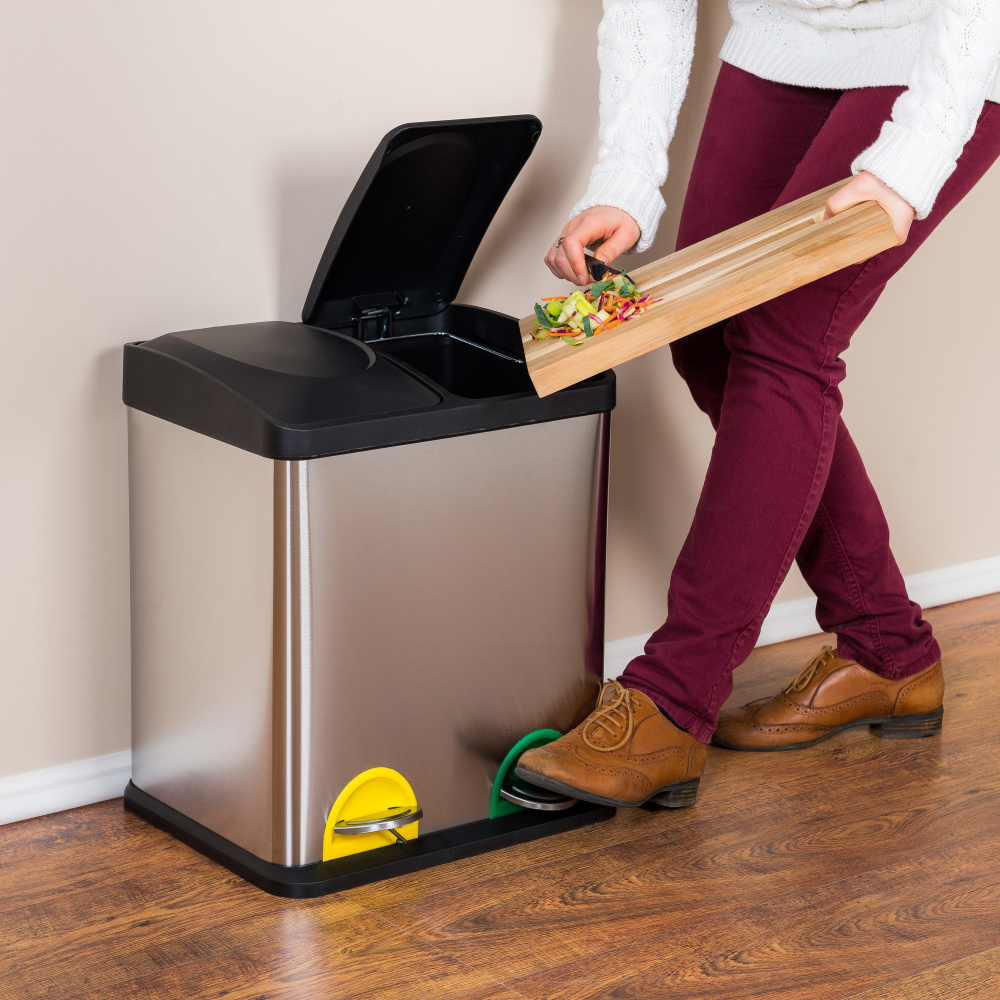
A trash can that is too small will require frequent emptying, leading to inconvenience and wasted time. On the other hand, a large bin may take up too much space in your kitchen and be difficult to maneuver around.
Choosing the right size of a trash can ensures efficient waste management while keeping your cooking area clean and organized. It also helps you save money by reducing the number of garbage bags used over time.
Moreover, having a properly sized bin encourages proper disposal habits among family members or roommates as it eliminates overflowing bins or littered waste on countertops.
Trash Can Size Considerations
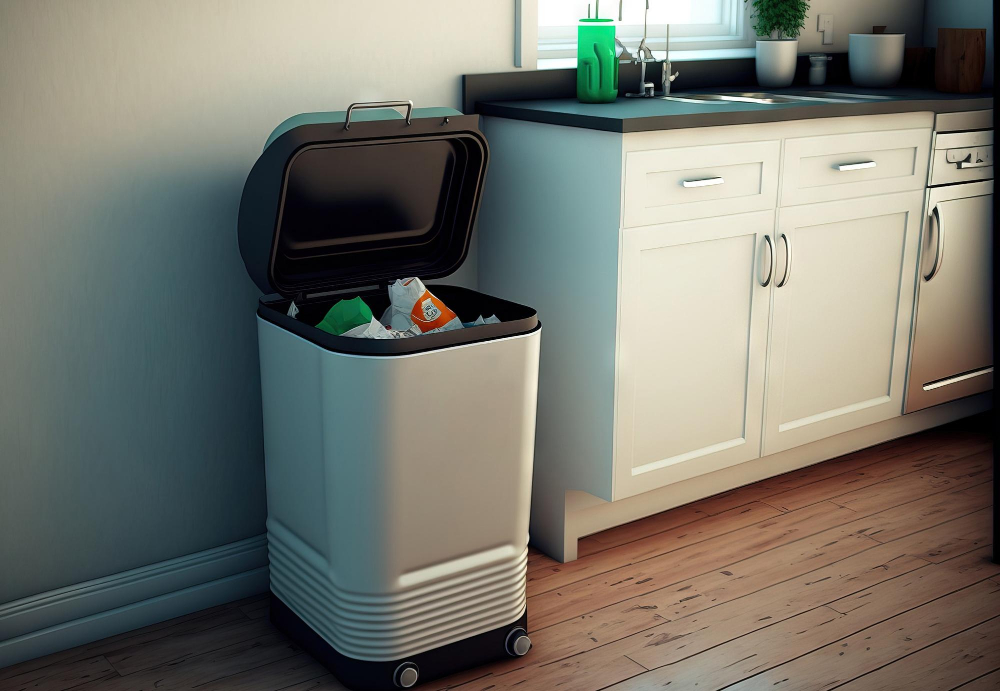
One of the most important considerations is your household’s waste production. If you have a large family or frequently entertain guests, then opting for a larger capacity trash can would be ideal.
Another factor that affects your choice is space constraints in your kitchen. If you have limited floor space, then choosing a compact and slim design would be more practical than going for an oversized bin that takes up too much room.
If aesthetics matter to you as much as functionality does when it comes to home decor choices – then picking out something stylish yet functional might also influence what size works best in terms of fitting into existing decor schemes while still being able accommodate all types and sizes of garbage bags without overflowing or becoming unsightly over time.
Average Kitchen Trash Can Size
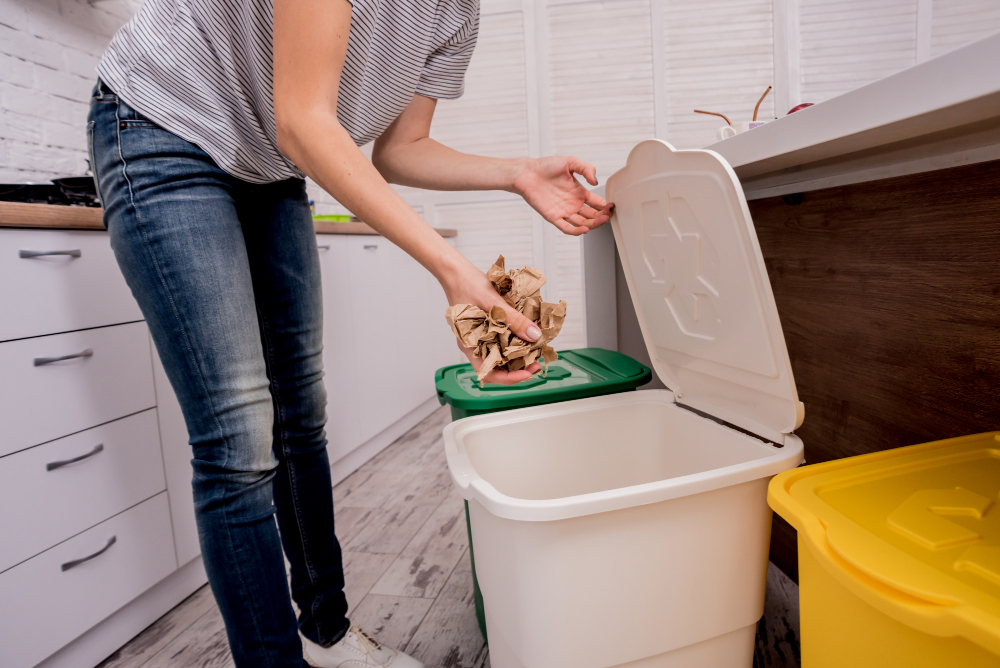
The standard capacity of a kitchen trash can ranges from 10 to 13 gallons, which is suitable for most households. However, if you have a larger family or generate more waste than usual, you may need to opt for bigger sizes.
It’s important not only to consider the amount of garbage produced but also the space available in your kitchen. A large-capacity bin may be too bulky and take up valuable floor space in smaller kitchens.
On the other hand, choosing a small-sized bin means frequent trips outside with overflowing bags that could lead to unpleasant odors and messes.
Therefore it’s crucial first to determine how much waste your household generates before deciding on what size works best for you.
Common Trash Can Capacities

The capacity refers to how much waste a trash can hold before it needs emptying. Trash cans come in various capacities, ranging from small ones that hold only a few liters of waste to large ones that can accommodate up to 50 gallons or more.
The most common sizes for kitchen trash cans are between 10 and 13 gallons, which are suitable for average households producing moderate amounts of garbage daily. However, if you have a larger family or generate more waste than usual due to cooking frequently at home or hosting gatherings often, you may need bigger-sized bins with higher capacities.
It’s essential not just to choose the right size but also ensure that your chosen bin fits comfortably in your designated space and doesn’t cause any inconvenience while using it regularly. Therefore measuring your available space beforehand is crucial when shopping for new bins.
Dimensions of Different Sizes

The dimensions of a trash can determine how much waste it can hold and where you can place it in your kitchen. Trash cans come in various sizes, ranging from small countertop models to large freestanding ones that require ample floor space.
The most common sizes for kitchen trash cans are 13-gallon, 30-gallon, and 50-gallon capacities. A standard 13-gallon capacity is suitable for most households as it holds an average week’s worth of garbage without taking up too much space.
If you have a larger family or generate more waste than the average household, consider opting for a bigger size such as the 30 or even the massive 50 gallons capacity options available on the market today.
It’s essential to measure your available space before purchasing any new appliance; this will help ensure that you select an appropriate-sized bin that fits comfortably into your designated area while still providing enough room around its perimeter so that opening and closing lids won’t be obstructed by other objects nearby.
Types of Kitchen Trash Cans
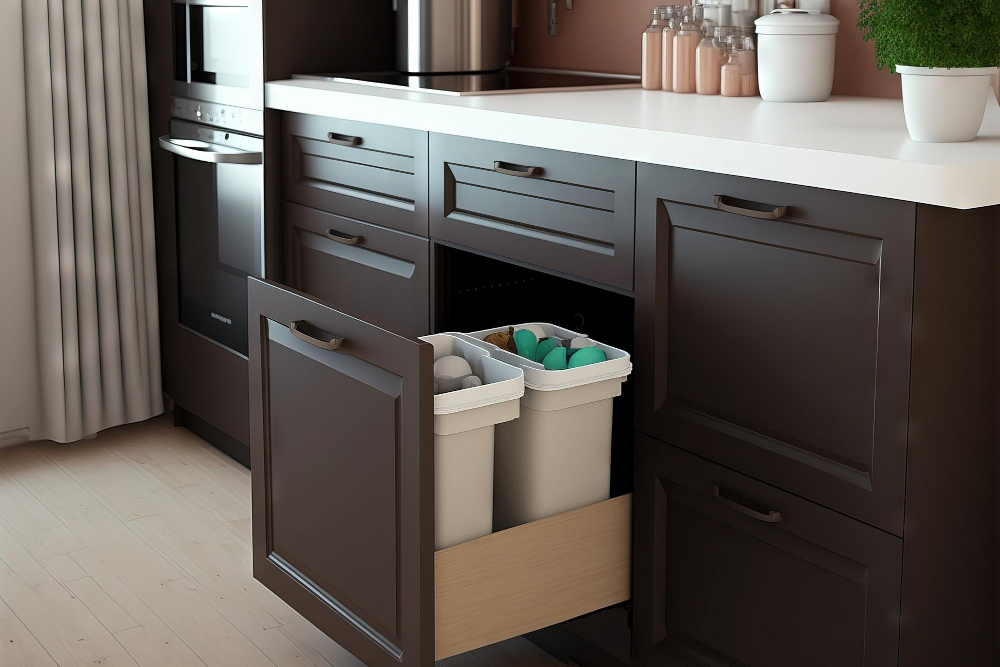
Each type has its unique features and benefits that cater to different needs. Some of the most common types include freestanding, built-in, touchless, step-on or foot pedal operated trash cans.
Freestanding trash cans are versatile and can be placed anywhere in your kitchen without any installation requirements. They come in various sizes and materials such as plastic or stainless steel.
Built-in trash cans are designed for those who prefer a seamless look for their kitchens with no visible garbage bins. These require installation into cabinets or drawers but offer an aesthetically pleasing solution while keeping waste out of sight.
Touchless trash cans have become increasingly popular due to their hygienic nature – they open automatically when you wave your hand over them so that you don’t need to touch them with dirty hands.
Step-on or foot pedal operated garbage bins allow users to dispose of waste without touching the lid by using a simple foot pedal mechanism which opens up the bin’s lid when pressed down on it.
Freestanding Vs. Built-in Trash Cans
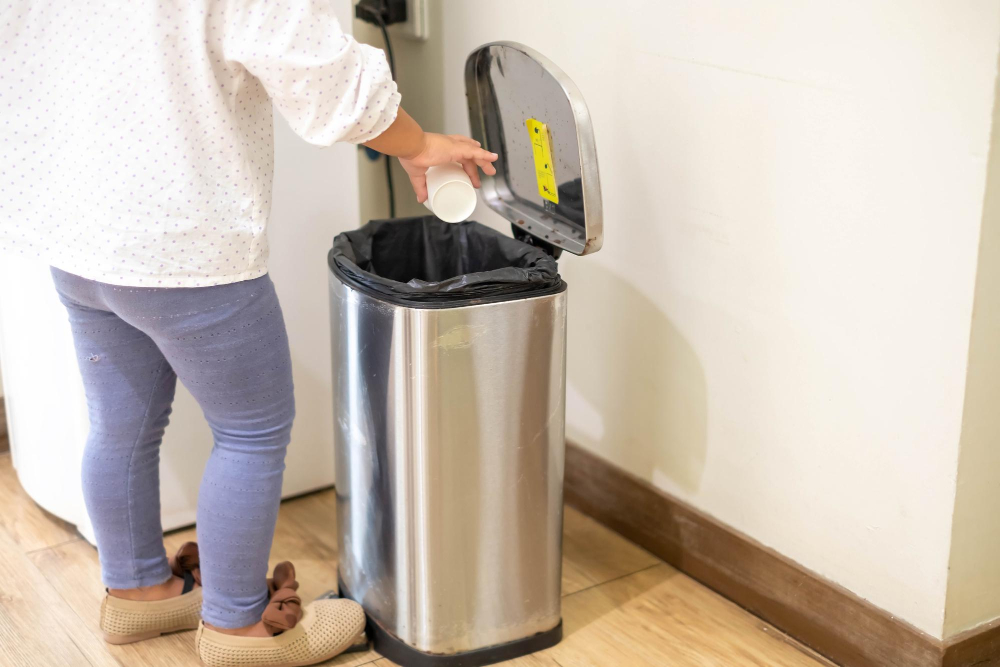
Freestanding trash cans are the most common type and come in various sizes and shapes. They are easy to move around, clean, and replace when needed.
On the other hand, built-in trash cans are designed to fit into your cabinets or drawers seamlessly for a more streamlined look.
Built-in trash cans offer several advantages over freestanding ones. Firstly they save floor space as they do not take up any extra room on your kitchen floor which is especially useful if you have limited space in your cooking area.
Secondly, since these types of bins sit inside cabinets or drawers out of sight from guests’ view; they provide an aesthetically pleasing appearance that blends well with modern kitchens.
However, there are some downsides too – Built-ins require professional installation which may be costly compared to buying a standalone bin off-the-shelf at any store near you. Additionally installing them requires cutting holes into cabinetry which could damage existing structures if done incorrectly.
Common Trash Can Materials
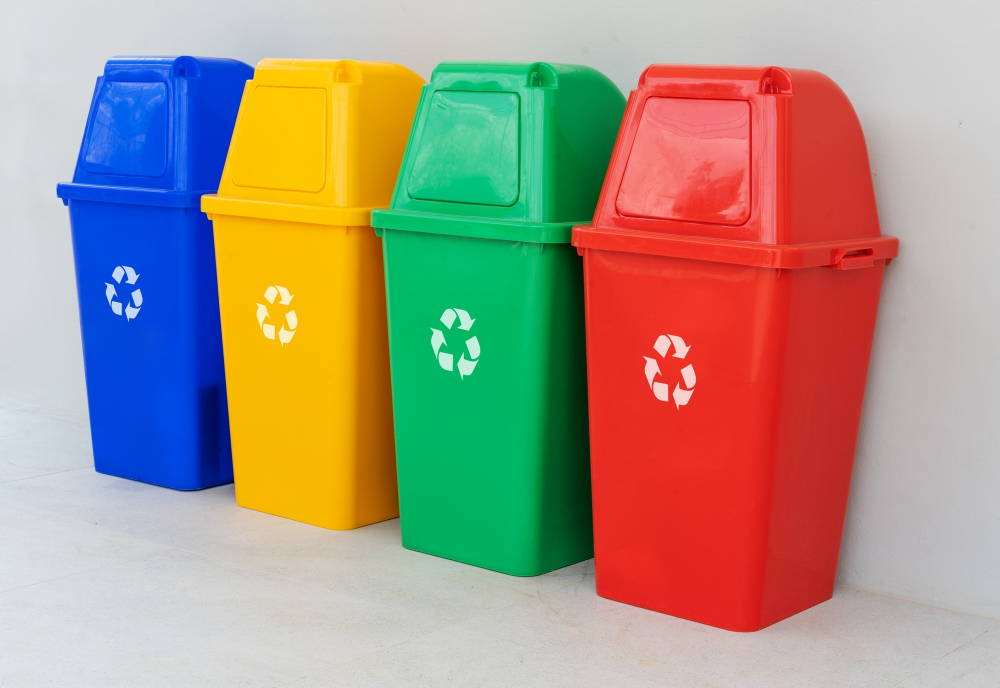
Trash cans come in various materials, each with its unique advantages and disadvantages. The most common materials used for making trash cans are plastic, stainless steel, and metal.
Plastic trash cans are lightweight and affordable but may not be as durable as other options. They also tend to absorb odors over time.
Stainless steel is a popular choice due to its sleek appearance that complements modern kitchens’ aesthetics. It’s easy to clean and doesn’t rust or corrode easily.
Metallic finishes like bronze or copper add elegance while being functional at the same time; however they require more maintenance than other types of bins since they can tarnish if not cared for properly.
How Much Trash Do You Create?
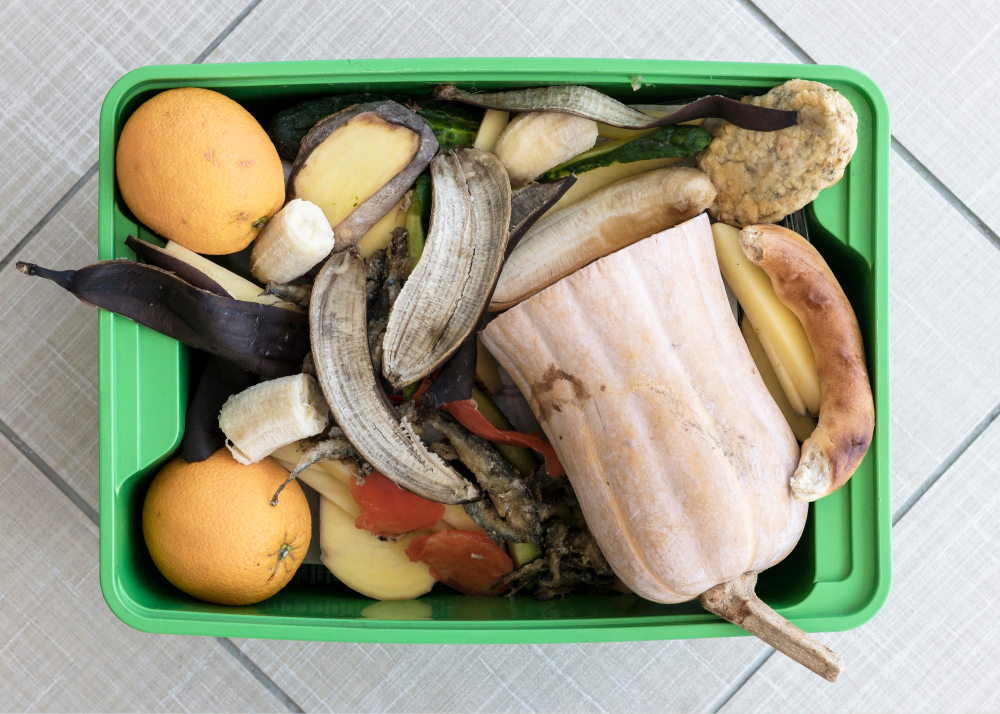
The average American produces around 4.5 pounds of waste per day, which adds up to approximately 1,642 pounds annually! However, this number varies depending on factors such as family size and lifestyle choices.
For instance, if you have a large family or frequently entertain guests at home, you may need a larger capacity trash can than someone who lives alone or with one other person. Similarly, if you cook often and generate more food waste than others do in your household – composting aside – then it would be best to opt for a bigger bin.
To determine how much garbage your home creates daily accurately; take note of the volume that accumulates over several days before disposing of it. This way will give an accurate estimate that helps choose the right size for your kitchen trash can needs without having too little space left over after each use or overflowing bins regularly due to insufficient capacity.
Space Constraints for Trash Cans
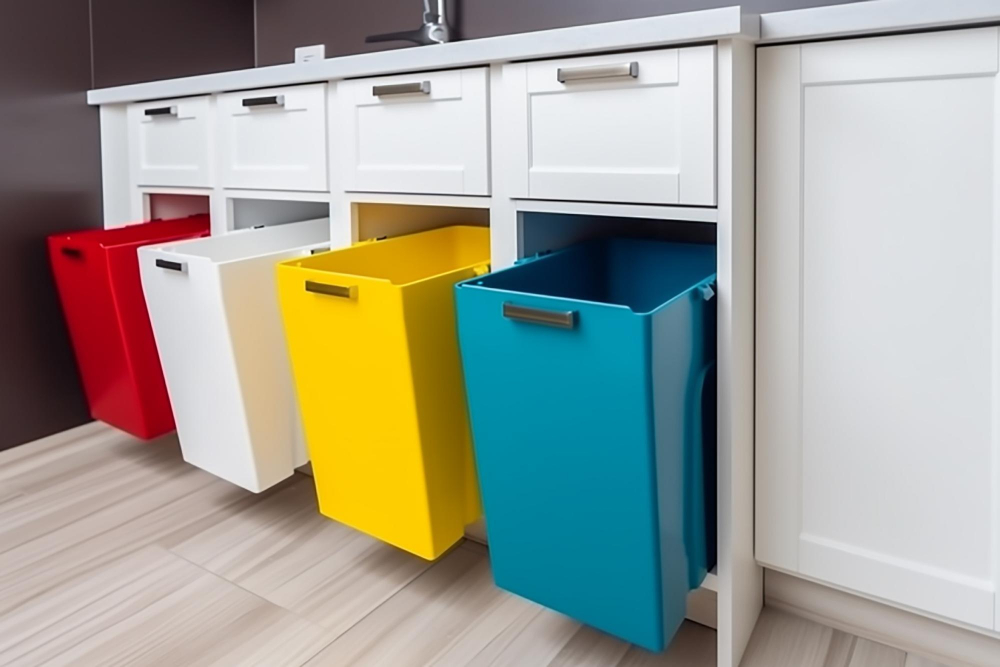
If you have a small kitchen or limited floor space, choosing a large trash can may not be practical. In such cases, opting for smaller-sized cans that fit under the sink or in cabinets is ideal.
Pull-out trash cans are also great options if you want to save on floor space and keep your garbage out of sight. These types of bins come in various sizes and designs that cater to different needs.
Another option is investing in built-in waste management systems that integrate with your cabinetry seamlessly. These systems offer efficient use of available storage spaces while keeping unsightly garbage hidden away from view.
When dealing with limited kitchen spaces, it’s crucial first to assess how much room you have before purchasing any type of bin system.
Selecting the Right Bag Size

Using an ill-fitting bag can lead to spills and messes, which defeats the purpose of having a trash can in the first place. The right bag size should be snug enough to prevent leaks but not too tight that it tears or is difficult to remove.
To determine what size bags you need for your kitchen trash can, measure its dimensions and compare them with standard garbage bag sizes available in stores. Most manufacturers provide information on their packaging about which bin sizes their bags are suitable for.
It’s also important to note that different types of waste may require different types of bags. For example, if you frequently dispose of sharp objects like broken glass or metal cans, using thicker contractor-grade garbage bags may be necessary.
Choosing the right-sized bag is just as crucial as selecting an appropriately sized kitchen trash can itself.
Pull-Out Trash Can Cabinet Requirements
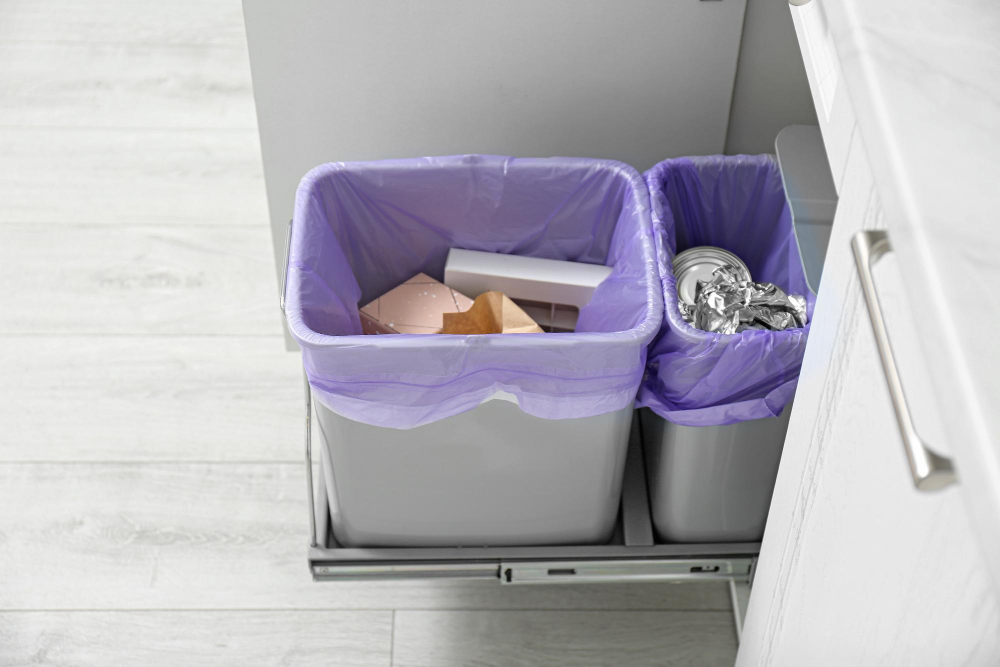
These cabinets are designed to fit seamlessly into your existing cabinetry and provide easy access to the trash can while keeping it out of sight. However, before installing one of these cabinets, there are some requirements that you need to consider.
Firstly, measure the space where you want to install the cabinet carefully. Make sure that there is enough room for both the cabinet and its contents without interfering with other appliances or furniture in your kitchen.
Secondly, check if any plumbing or electrical wiring runs through this area as it may affect installation options.
Thirdly ensure that there is enough clearance around all sides of the pull-out drawer when fully extended so that it does not interfere with adjacent drawers or doors opening/closing properly.
Lastly choose an appropriate size bin which fits well within available space inside pull-out drawer and also suits household’s daily waste generation capacity.
Factors to Consider When Choosing a Trash Can
Firstly, you need to determine the amount of waste your household generates daily. This will help you decide on the appropriate size and capacity of your trash can.
Secondly, think about where you want to place it in your kitchen – do you have enough floor space for a freestanding bin or would a built-in option be more suitable? consider the type of material that best suits your needs; plastic is lightweight and easy to clean while stainless steel is durable but may show fingerprints easily.
Another important factor when selecting a trash can is its lid mechanism – do you prefer one with an open top or one with an automatic sensor that opens when approached? The latter option may be more hygienic as it eliminates contact with germs.
Lastly, keep in mind any specific requirements such as pull-out cabinet dimensions if opting for this style or bag sizes needed for certain models.
Garbage Can Placement in Small Kitchens
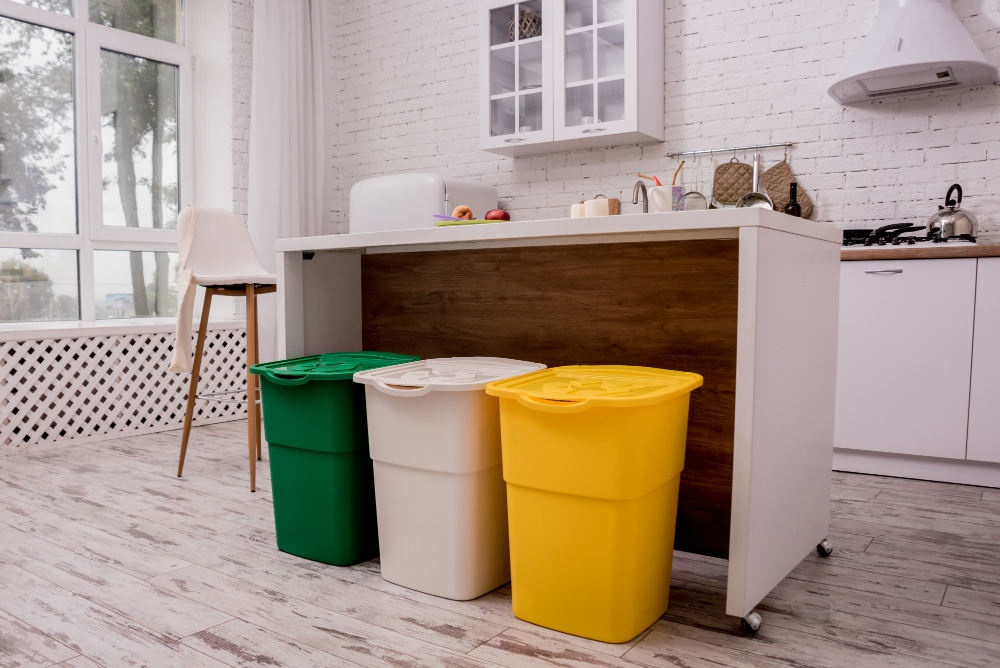
You don’t want it to take up too much space or get in the way of your cooking and meal prep. One option is to place it under the sink if there’s enough room, but this may not be practical if you use cleaning supplies or other items that need storage space.
Another solution could be placing a pull-out trash can cabinet in an unused corner of your kitchen. This type of garbage bin fits neatly into tight spaces and allows easy access when needed while keeping clutter out of sight.
You could also consider hanging a small waste basket on the inside door of one of your cabinets using adhesive hooks or screws for quick disposal without taking up any floor space.
Ultimately, where you place your garbage can depends on how much counter and floor space you have available as well as personal preference.
Capacity of Typical Trash Cans
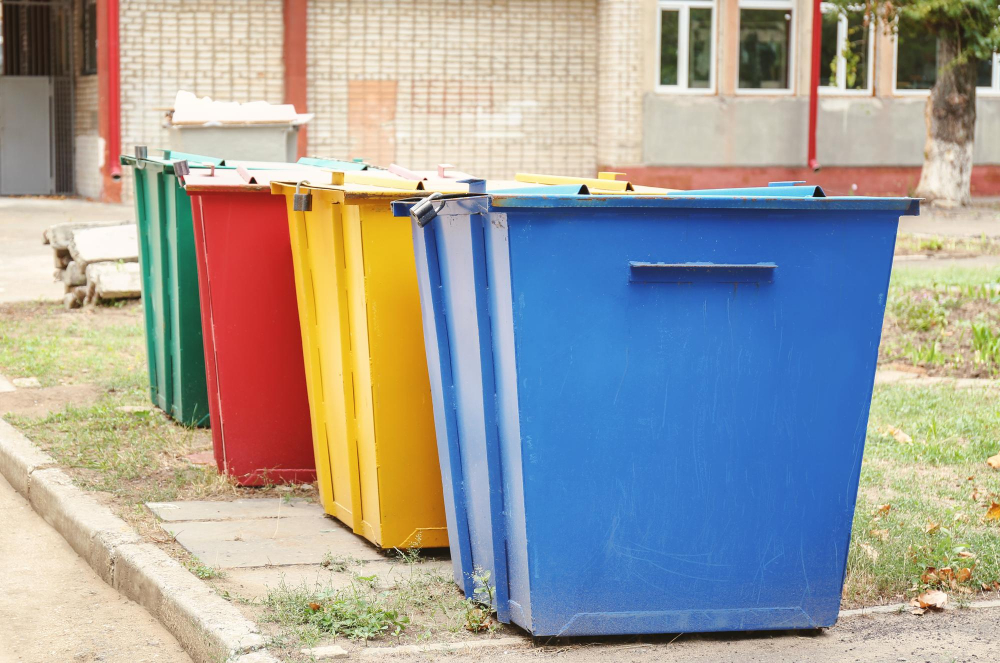
The average household generates around 4.5 pounds of waste per day, which translates into approximately 30-35 gallons of garbage per week. Therefore, choosing a trash can with adequate capacity is crucial in ensuring that you don’t have to empty it frequently.
Typical kitchen trash cans come in various sizes and capacities ranging from small countertop models with less than one gallon volume up to large outdoor bins that hold over 100 gallons. However, for most households, the standard size ranges between 10-13 gallons.
It’s important not only to consider how much waste your household produces but also how often you want or need to take out the garbage before making your final decision on what size bin will work best for you.
Trash Can Size Chart
A trash can size chart provides an easy-to-understand visual representation of various options available in the market, making it easier for you to choose one that fits your needs perfectly.
The average capacity for most kitchen trash cans ranges from 10-13 gallons. However, depending on your household’s waste production and space constraints, you may need something smaller or larger than this range.
A standard 10-gallon bin is ideal for small households with minimal waste production. On the other hand, if you have a large family or entertain frequently at home, consider investing in a larger-sized bin such as 20-gallon capacity.
It’s important to note that while bigger bins may seem like an attractive option due to their higher capacity; they also take up more floor space and are heavier when full – which could make them difficult to move around during cleaning sessions.
The right size of your kitchen trash can depends on several factors such as household waste production levels and available storage space.
Determining Ideal Trash Can Size
Firstly, consider the amount of waste generated by your household daily. If you have a large family or entertain frequently, you may require a larger capacity trash can to accommodate more garbage.
Secondly, think about how often you want to empty the bin. A smaller-sized bin will need frequent emptying while a larger one may not require as much attention.
Thirdly, take into account any space constraints in your kitchen and where you plan to place the trash can. If there is limited floor space available in your cooking area, consider investing in an under-counter pull-out cabinet that houses multiple bins of varying sizes.
Lastly, ensure that whichever size of trash can chosen fits standard bag sizes readily available at grocery stores or online retailers.
Tips for Proper Trash Disposal

Here are some tips to ensure that you dispose of your waste correctly:
1. Separate recyclables: Make sure to separate recyclable materials from non-recyclable ones before disposing of them in the trash can.
2. Use biodegradable bags: Opt for biodegradable or compostable bags instead of plastic ones, as they decompose faster and are better for the environment.
3. Don’t overfill the bin: Avoid overfilling your trash can, as it makes it difficult to remove the bag without spilling its contents.
4. Clean regularly: Regularly cleaning your garbage can helps prevent unpleasant odors and keeps pests away.
5. Dispose of hazardous waste properly: Hazardous materials such as batteries, light bulbs, and electronics should be disposed of separately at designated collection points rather than being thrown in with regular household waste.
FAQ
What size trash can should you get for a kitchen?
For a small kitchen, get an 8-gallon under-the-cabinet trash can, while a 13-gallon trash can is convenient for larger kitchens.
How many gallons is the typical kitchen trash can?
The typical kitchen trash can is around 12 to 16 gallons in size.
How tall is 13-gallon trash can?
The 13-gallon trash can measures 14.9 x 17.2 x 25.5 inches.
How wide is a kitchen trash can?
The standard width of a kitchen trash can is approximately 13.5 inches.
What are the best materials for a kitchen trash can?
The best materials for a kitchen trash can are stainless steel, plastic, and metal due to their durability, ease of cleaning, and odor resistance.
How often should you empty a kitchen trash can to maintain cleanliness?
To maintain cleanliness, you should empty a kitchen trash can at least once a day.
Are there any space-saving trash can designs ideal for small kitchens?
Yes, slim and compact trash cans with a built-in recycling system are ideal space-saving solutions for small kitchens.




